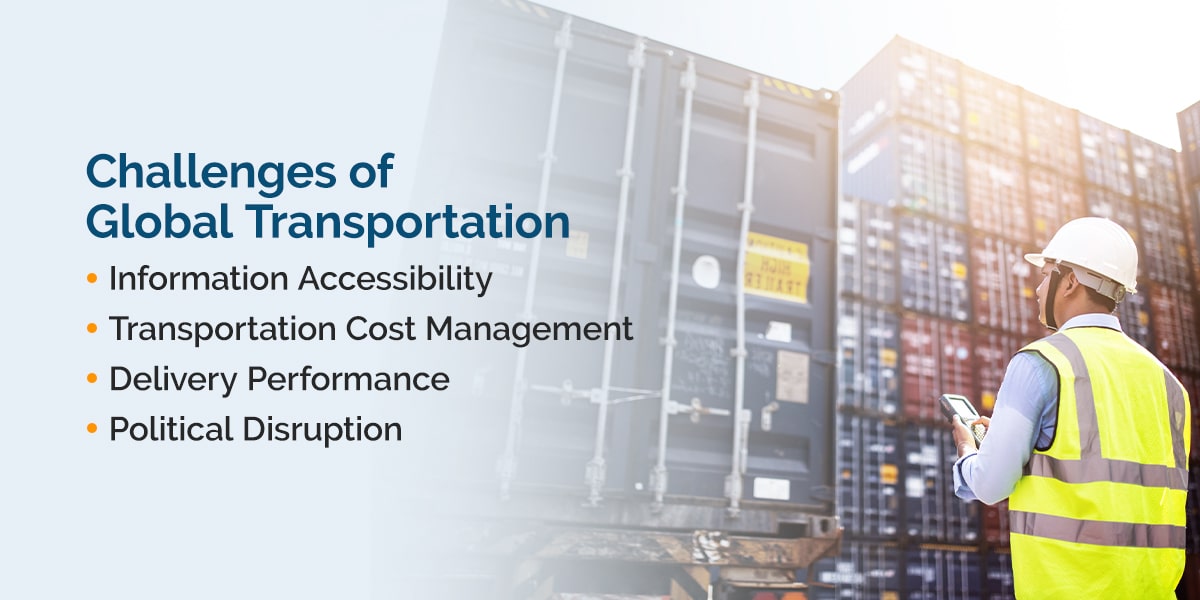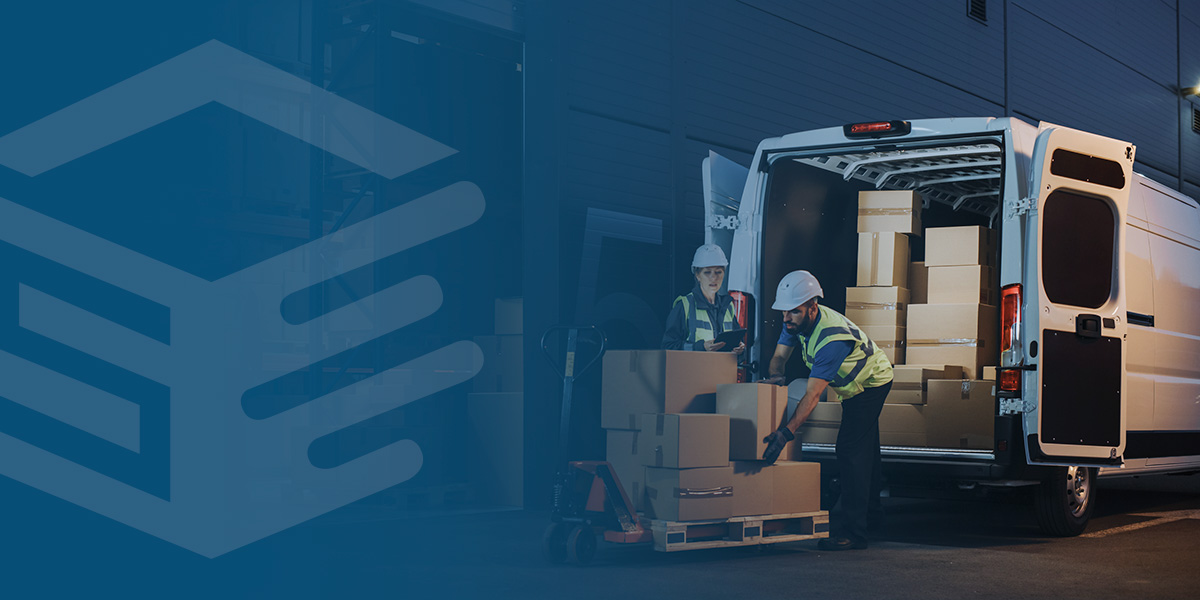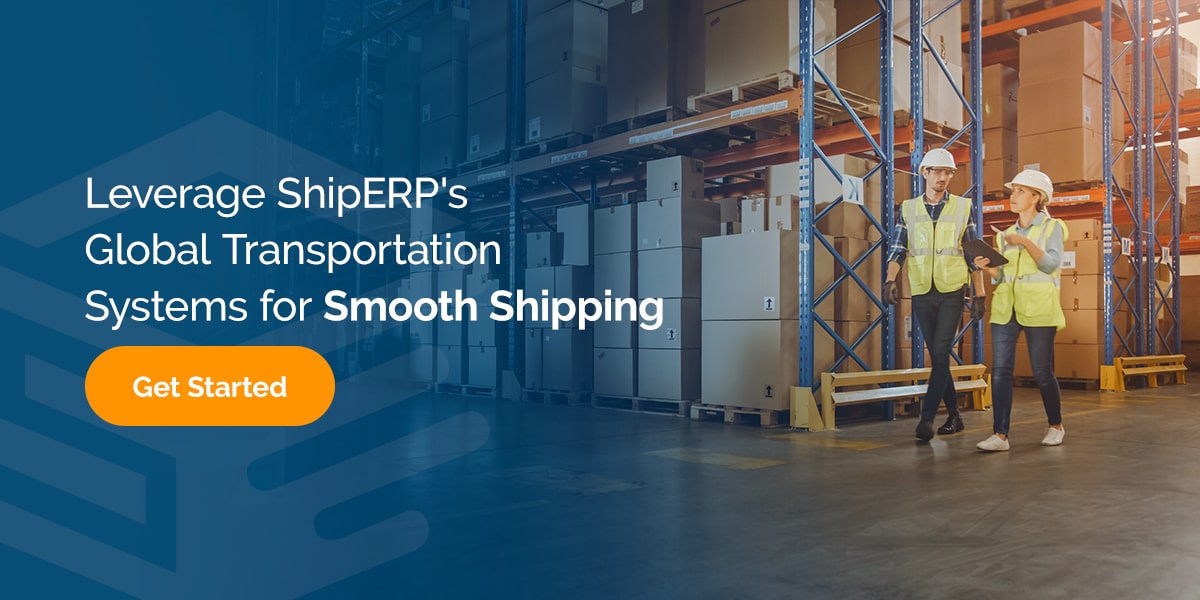
What Is Global Transportation Management?
It's easy to confuse transportation management (TM) with logistics or supply chain management. While there is some overlap between these operations, transportation management is a distinct subset within the industry.
Understanding the difference between them can help your business make the shipping process smooth and straightforward. Let's dive in.
What Is Transportation Management?
Transportation management (TM) involves tracking and managing all types of transportation operations, including:
- Fuel costs
- Accounting
- Warehousing
- Communications
- EDI implementations
- Vehicle maintenance
- Routing and mapping
- Traveler and cargo handling
- Carrier selection and management
Contrast that with supply chain management (SCM), which is concerned with planning, executing, monitoring, and managing all supply chain activities. The goals of SCM include:
- Creating net value
- Measuring global performance
- Leveraging worldwide logistics
- Building competitive infrastructure
- Synchronizing supply with demand
Put simply, if SCM creates and controls the infrastructure necessary to generate net value, TM manages the needs and requirements to physically transport goods across that infrastructure.
So, while the two are similar, TM has its own set of unique challenges (and unique solutions) that every shipping exporter should be aware of.

Challenges of Global Transportation
Now that we know what TM is, how does it help companies improve their global transportation efforts? And what kinds of issues can transportation system management address?
According to experts, global transportation has four main challenges:
- Information Accessibility
- Transportation Cost Management
- Delivery Performance
- Political Disruption
Although it's new to the list, political disruption is becoming increasingly important to monitor. As we saw in 2022, supply chain disruptions have impacted delivery performance, war and political turmoil have resulted in tariffs and trade disputes, and transportation costs across the board are at an all-time high.
Let's dive a little deeper into each of these challenges.
Information Accessibility
Notice we didn't say Information Availability — that's because shippers today have plenty of information at their disposal. The real challenge is managing, capturing, and accessing all that information without becoming overwhelmed.
The thing transportation teams most desperately need is visibility into supplier activity. Too often, transportation teams have little to no visibility into purchase orders (POs) after executing them to their suppliers. This breakdown of control in early stages of the transportation process ripples through across supply chains, creating significant inventory management and optimization challenges.
Many systems also rely on information from external sources, which can make matters worse. The harmonious coordination of reporting, analysis, and communication between these systems — often composed of suppliers, carriers, freight forwarders, regulatory databases, and the like — relies heavily on the availability of quality information. Without visibility or accurate information, what needs to be an efficient, well-rehearsed orchestra becomes a costly medley of discordant notes.
Transportation Cost Management
Unsurprisingly, most TMS studies reveal cost to be the leading challenge for transportation professionals. You may be surprised to hear that the greatest reductions in cost come from improvements to visibility and analysis as opposed to negotiation or execution.
Here's what we mean. If a finished product's cost includes the negotiated price of raw materials and the costs associated with moving the product across the supply chain, the most flexible costs are the ones where innovation breeds efficiency — the price of raw materials is a hard cost.
Now, that's not to say that negotiations aren't crucial. But transportation optimization usually lends itself to greater leverage and negotiating power.
For example, while carrier freight invoicing errors are costly, they're also difficult to audit effectively. Better rate negotiation tactics won't solve the underlying problem, as improving invoice management would require greater man hours at a higher cost. In this situation, integrating an automated invoice auditing solution would reduce the costs associated with invoicing errors by optimizing the transportation process.
Delivery Performance
The insidiousness of the traditional challenges is their interconnectivity. Supply chain visibility (or a lack thereof) directly impacts delivery performance.
Some businesses outsource their transportation planning to 3rd party providers. In other situations, freight forwarders (3PLs) are tasked with monitoring suppliers and arranging shipments from vendors. Unfortunately, the lack of direct visibility into their global supply chain activity will lead to diminished performance capabilities for both businesses.
Another common obstacle to timely delivery is border delays. Of course, for businesses without an automated export system (AES), holdups at customs prove difficult to resolve — never mind if visibility is compromised! Savvy transportation teams adopt AES to stay compliant, avoid delays and penalties, and navigate international shipping regulations.
Even after passing the border — or reaching the local warehouse — your customer's package still needs to reach its destination. And finding the right carrier for last-mile delivery can be tricky since you're looking for available trucks operating within strict budgets and timelines.
The challenge here is efficiently comparing rates across a broad spectrum of carriers. Multi-carrier rate shopping solutions enable you to compare shipping rates from multiple carriers in real time, which is why many businesses use them for parcel delivery.
Political Disruption
Political disruptions, such as tariffs and sanctions, have far-reaching implications in a globalized world.
We've seen countries weaponize tariff and non-tariff barriers amid trade disputes. The resulting shift in the trade landscape demands that businesses remain agile and react swiftly to developing situations. For example, the British withdrawal from the European Union (Brexit), had an enormous impact on international shipping processes, most notably to changes in shipping compliance.
Because it's less predictable than traditional transportation challenges, Political Disruption is best met with a holistic approach. "Digital Transformation" has become a buzzword in the supply chain and logistics community, but that's for good reason — companies who've invested in large-scale digital transformations have been better prepared to weather the onslaught of storms since COVID began.
Overcoming Challenges with a Global Parcel Management Solution
So, we've identified the major challenges that plague TM and hinted at some solutions, but what is a parcel management solution and how does it overcome the above challenges?
Parcel software solutions provide real-time visibility into:
- Day-to-day transportation operations
- Trade compliance
- Import/export documentation
- Carrier rates
- And more
The most effective solutions consolidate these processes into one platform to reduce labor, maximize efficiency, and increase profit. Look for a solution that offers 24/7 expert support to help you manage issues when they arise. Additionally, a solution with automation capabilities will take over repetitive, time-consuming tasks from your people so they can focus on getting more done.
Leverage ShipERP's Global Transportation Systems for Smooth Shipping
If you're looking for a parcel shipping solution that integrates seamlessly with SAP TM, ShipERP can help! Our experienced team is dedicated to helping companies like yours navigate digital supply chain transformation with software solutions configured to meet your unique needs.
Ready to bring your shipping operations into the 21st century? Contact us today to learn more about our shipping and compliance solutions.


